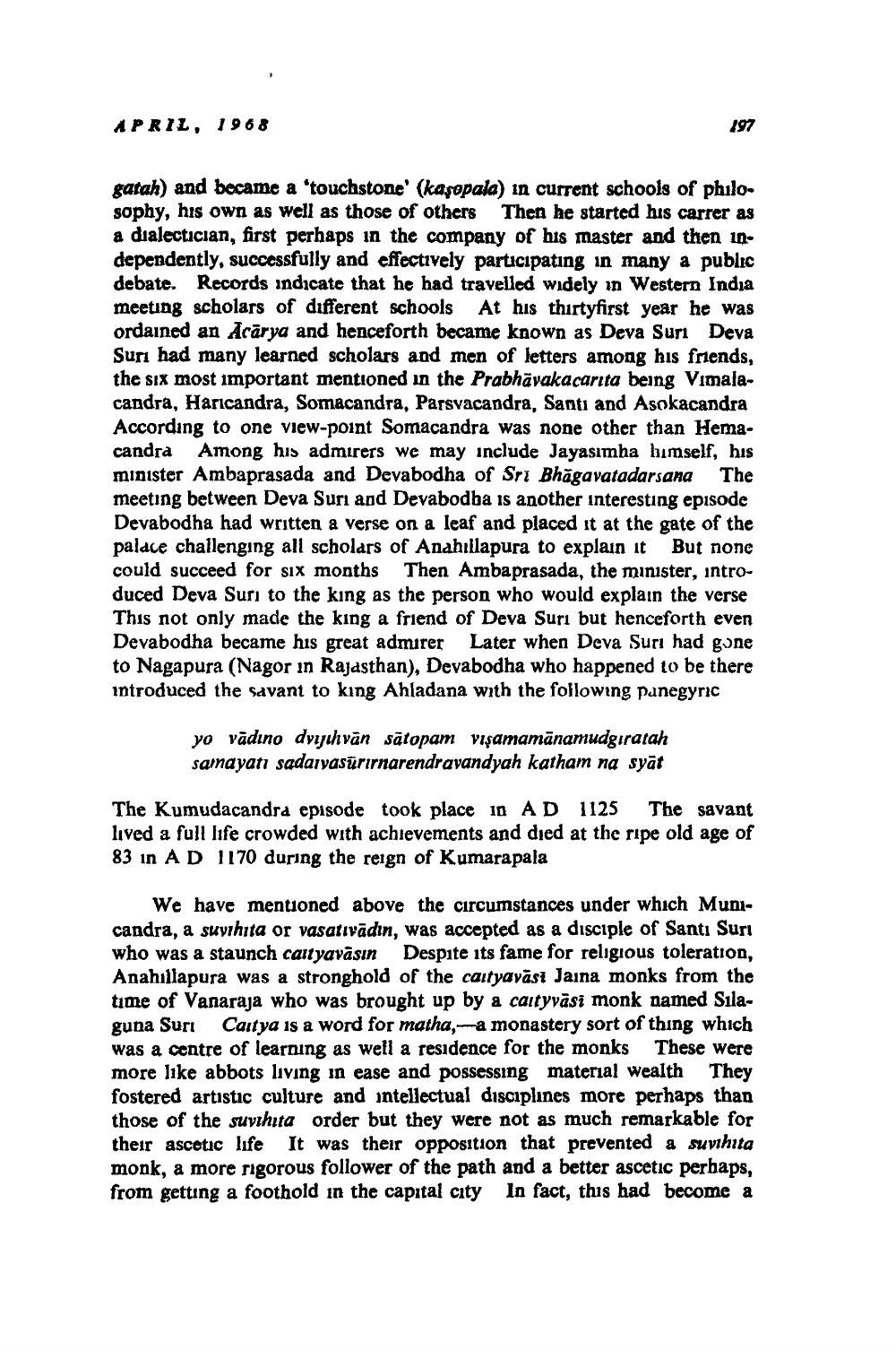________________
APRIL, 1968
197
gatah) and became a 'touchstone' (kazopala) in current schools of philosophy, his own as well as those of others Then he started his carrer as a dialectician, first perhaps in the company of his master and then 10dependently, successfully and effectively participating in many a public debate. Records indicate that he had travelled widely in Western India meeting scholars of different schools At his thirtyfirst year he was ordained an Acārya and henceforth became known as Deva Suri Deva Suri had many learned scholars and men of letters among his friends, the six most important mentioned in the Prabhävakacarita being Vimalacandra, Haricandra, Somacandra, Parsvacandra, Santi and Asokacandra According to one view-point Somacandra was none other than Hemacandra Among his admirers we may include Jayasimha himself, his minister Ambaprasada and Devabodha of Sri Bhagavatadarsana The meeting between Deva Suri and Devabodba is another interesting episode Devabodha had written a verse on a leaf and placed it at the gate of the palace challenging all scholars of Anahıllapura to explain it But none could succeed for six months Then Ambaprasada, the minister, introduced Deva Suri to the king as the person who would explain the verse This not only made the king a friend of Deva Suri but henceforth even Devabodha became his great admirer Later when Deva Suri had gone to Nagapura (Nagor in Rajasthan), Devabodha who happened to be there introduced the savant to king Ahladana with the following panegyric
yo vādino dvylhvăn sātopam vışamamānamudgiratah samayatı sadarvasürırnarendravandyah katham na syāt
The Kumudacandra episode took place in AD 1125 The savant lived a full life crowded with achievements and died at the ripe old age of 83 in AD 1170 during the reign of Kumarapala
We have mentioned above the circumstances under which Municandra, a suvihita or vasarivādın, was accepted as a disciple of Santi Suri who was a staunch caityavasın Despite its fame for religious toleration, Anahillapura was a stronghold of the cautyavāsı Jaina monks from the time of Vanaraja who was brought up by a caityvāsi monk named Silaguna Suri Caitya is a word for matha,--a monastery sort of thing which was a centre of learning as well a residence for the monks These were more like abbots living in ease and possessing material wealth They fostered artistic culture and intellectual disciplines more perhaps than those of the suvihta order but they were not as much remarkable for their ascetic life It was their opposition that prevented a suvihita monk, a more rigorous follower of the path and a better ascetic perhaps, from getting a foothold in the capital city In fact, this had become a




